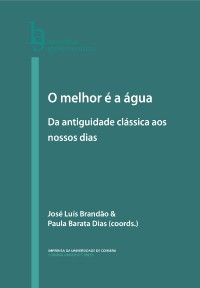Please use this identifier to cite or link to this item:
https://hdl.handle.net/10316.2/45098| DC Field | Value | Language |
|---|---|---|
| dc.contributor.author | Dias, Paula Barata | |
| dc.date.accessioned | 2019-01-15T23:06:23Z | |
| dc.date.accessioned | 2020-09-05T01:29:30Z | - |
| dc.date.available | 2019-01-15T23:06:23Z | |
| dc.date.available | 2020-09-05T01:29:30Z | - |
| dc.date.issued | 2018 | - |
| dc.identifier.isbn | 978-989-26-1567-7 | |
| dc.identifier.isbn | 978-989-26-1568-4 (PDF) | |
| dc.identifier.issn | 2182-8814 | |
| dc.identifier.uri | https://hdl.handle.net/10316.2/45098 | - |
| dc.description.abstract | Water has an ambiguous status in biblical texts. Waters that wash and waters that quench are recurrent topics in the allegorical language of the Gospels and in the objective context of certain episodes of the life of Jesus, along with others in which it appears as an annihilating force. By analyzing the presence and symbolism of water in several biblical episodes, we will try to interpret the ambivalent status of water (water of punishment, water of salvation) in the light of the typological construction developed by Christian hermeneutics in the NT from the ambivalence of water in the OT. | eng |
| dc.description.abstract | A água apresenta, nos textos bíblicos, um estatuto ambíguo. A água que lava e a água que sacia são tópicos recorrentes na linguagem alegórica dos Evangelhos e no contexto objetivo de determinados episódios da vida de Jesus, a par de outros em que a mesma surge enquanto força aniquiladora. Analisando a presença e a simbologia da água em alguns episódios bíblicos, procuraremos interpretar o estatuto ambivalente das águas, (água de punição, água de salvação) à luz da construção tipológica enquanto hermenêutica cristã desenvolvida no NT a partir da ambivalência da água no AT. | por |
| dc.language.iso | por | - |
| dc.publisher | Imprensa da Universidade de Coimbra | por |
| dc.relation.ispartof | http://hdl.handle.net/10316.2/45094 | por |
| dc.rights | open access | - |
| dc.subject | water | eng |
| dc.subject | Bible | eng |
| dc.subject | Old Testament | eng |
| dc.subject | New Testament | eng |
| dc.subject | typology | eng |
| dc.subject | prefiguration | eng |
| dc.subject | água | por |
| dc.subject | Bíblia | por |
| dc.subject | Antigo Testamento | por |
| dc.subject | Novo Testamento | por |
| dc.subject | tipologia | por |
| dc.subject | prefiguração | por |
| dc.title | As águas que matam e as águas que salvam: a ambiguidade da água nos textos bíblicos | por |
| dc.title.alternative | Waters that kill and waters that save: the ambiguity of water in niblical texts | eng |
| dc.type | bookPart | por |
| uc.publication.firstPage | 63 | - |
| uc.publication.lastPage | 83 | - |
| uc.publication.location | Coimbra | por |
| dc.identifier.doi | 10.14195/978-989-26-1568-4_4 | - |
| uc.publication.digCollection | PB | por |
| uc.publication.orderno | 4 | - |
| uc.publication.area | Artes e Humanidades | por |
| uc.publication.bookTitle | O melhor é a água: da antiguidade clássica aos nossos dias | - |
| uc.publication.manifest | https://dl.uc.pt/json/iiif/10316.2/45098/200762/manifest?manifest=/json/iiif/10316.2/45098/200762/manifest | - |
| uc.publication.thumbnail | https://dl.uc.pt/retrieve/11014265 | - |
| uc.publication.parentItemId | 55078 | - |
| uc.itemId | 68157 | - |
| item.grantfulltext | open | - |
| item.fulltext | With Fulltext | - |
| Appears in Collections: | O melhor é a água: da antiguidade clássica aos nossos dias | |
Files in This Item:
| File | Description | Size | Format | |
|---|---|---|---|---|
| as_aguas_que_matam_e_as_aguas_que_salvam_a_ambiguidade_da_agua_nos_textos_biblicos.pdf | 441.51 kB | Adobe PDF |  |
Items in DSpace are protected by copyright, with all rights reserved, unless otherwise indicated.
